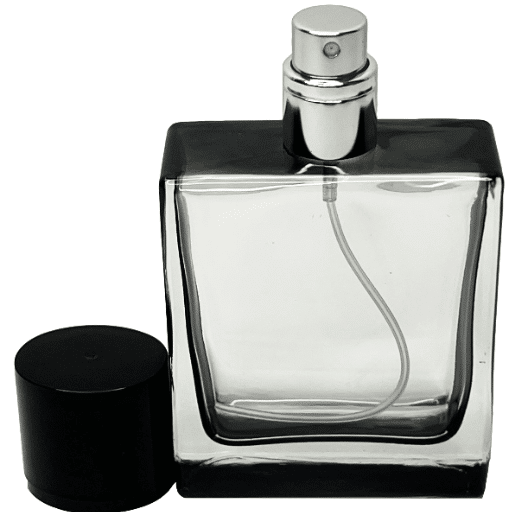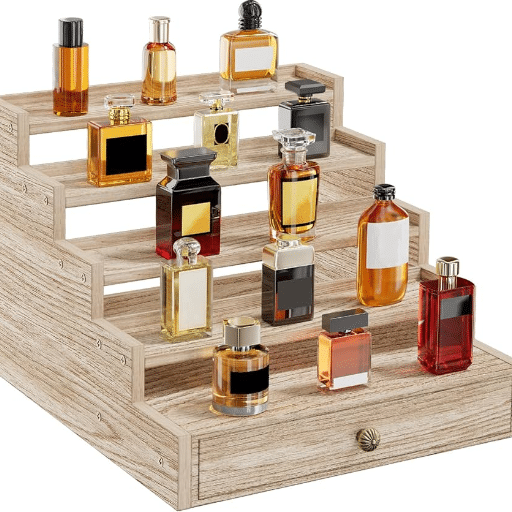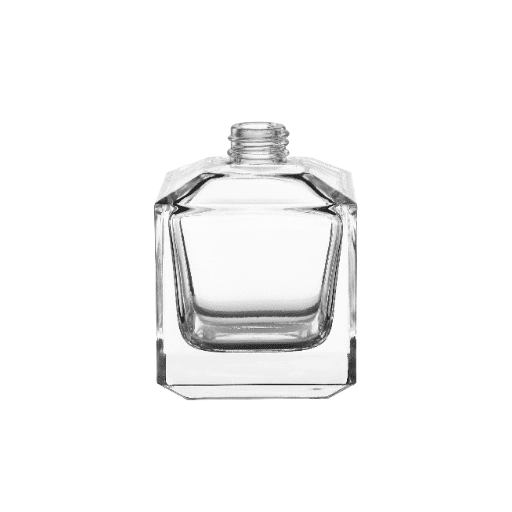Selecting a fragrance goes beyond liking a pleasant scent; it requires understanding self, body chemistry, and the occasion. With limitless choices, one may easily feel overwhelmed or fall into common traps, resulting in buyer remorse. This guide intends to simplify the process by highlighting the most important things one needs to consider before buying a fragrance. Whether shopping for oneself or trying to find the perfect gift, this article will help readers avoid pitfalls and ensure thoughtful decisions. Buckle up to elevate your fragrance game without breaking the bank.
How do I choose the right perfume for my body chemistry?

Selecting the perfect perfume for your body chemistry begins by testing scents onto your skin since they transform when blended with natural oils. Prioritize fragrances whose base notes you appreciate, and that fit your lifestyle or character. Always let the perfume mature; give it at least 15-30 minutes after application before forming an assessment to appreciate how the scent feels on you. If possible, go to a shop that offers sample testing and restrict trying out several scents at once to avoid overstimulation. If you try out a new store, it is advisable to opt for a smaller or sample-sized bottle instead of a full-sized one.
Why testing perfume on your skin before buying a whole bottle is crucial.
Testing a fragrance on your skin allows you to feel how it blends with your chemistry. Your skin’s oils, acidity (pH level), and diet can affect how a scent develops and smells over time. For example, some perfumes might blend beautifully with a tester strip or another person but not with you, creating different fragrance experiences. Moreover, testing on the skin helps you determine a perfume’s longevity and sillage – the distance the scent travels from the wearer- a crucial factor when investing in a fragrance. Fragrance research further underscores the unpredictability of fragrances among different people, which attests to the need for personal testing. This way, you get to avoid the regret of an imprudent purchase and ensure the chosen scent turns into the adaptable essence of your identity.
Understanding how different fragrance families interact with body chemistry
Citrus Scents and Body Chemistry
The vibrant and refreshing citrus fragrances typically have lemon, bergamot, and grapefruit notes that suit people with balanced or neutral skin pH levels. Higher acidity may cause bright citrus notes to develop faster. Research shows that these scents perform well in warmer climates with elevated body temperature because they help diffuse light, zesty aromas.
Woody Scents and Skin Reaction
People with warmer or oilier skin tend to perform best with woody fragrances with deep earthy notes like sandalwood, cedarwood, and patchouli. This is because the oils in the skin assist in projecting the darker, resinous elements of the fragrance, producing a potent and enduring sillage. It has been suggested that fragrances of this nature can delightfully evolve on the skin, making them favorites for evenings or colder seasons because of their warm, grounding nature.
Floral Fragrances and Individual Variability
Floral fragrances evoke a wide range of responses in the wearer’s body chemistry due to their flower-dominant notes like rose, jasmine, and lily. The scent of these fragrances may have weaker longevity on individuals with drier skin due to reduced moisture projection. However, wearing an unscented moisturizer beneath the perfume aids in holding and extending the duration of its scent. Moreover, these floral scents are very adaptable to different skin types and conditions, which makes them well-balanced and suitable for most environments.
Oriental Fragrances and Their Complex Evolution
Oriental fragrances, which tend to be dominant with spice, vanilla, and amber notes, are mainly dictated by a person’s heat and moisture levels. Their bold and exotic scent gives off a sultry appeal, making them ideal for cooler temperatures and evening use. These fragrances are more sophisticated and diehard sultry, revealing their bold nature over warm or humid skin with time. It is widely suggested that oriental perfumes be worn in small amounts due to the overwhelming power of great concentration on immediate application.
How top notes differ from base notes when making an informed decision
Understanding the terms ‘top notes’ and ‘base notes’ can help you make a more educated choice when shopping for perfume. The top notes are the scents that are recognizable immediately after the perfume is applied. They are meant to impress you and are light, fresh, and fleeting. Common top notes are often citrus, like bergamot or lemon, while herbs such as lavender and mint are also used. Generally, top notes tend to evaporate in a short duration of 5 to 15 minutes.
On the contrary, base notes form the foundation of a fragrance. These notes emerge after the top and middle notes fade away and have warm and enduring qualities. Base notes linger on the skin for hours, so they must provide rich depth and excellent longevity. For base notes, ingredients such as vanilla, amber, oud, and sandalwood are popular since they endure over time.
When purchasing a perfume, focus on the initial experience of the top notes but pay even more attention to the base notes, which will shape the fragrance’s character. The interaction with skin over time is critical, as a person’s lifestyle, preferences, and general aromas they enjoy will only be suitable when the perfume compliments their skin scents.
What are the different perfume concentrations, and how do they affect longevity?
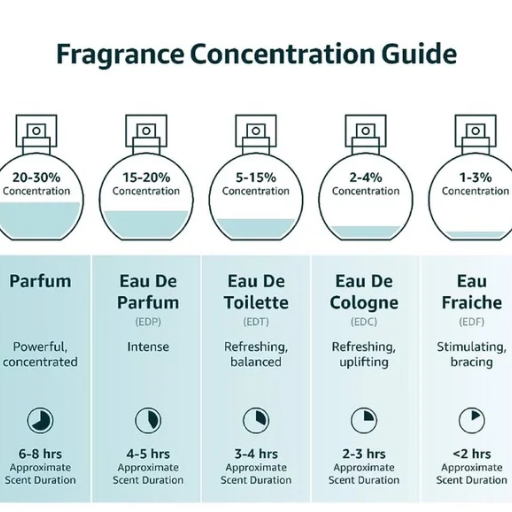
Perfume Concentration is essentially the strength of perfume, which is divided based on the percentage of aromatic oils blended with water or alcohol. The higher the concentration, the higher the scent strength and durability.
- Parfum (Extrait de Parfum) has the highest concentration of fragrance oils, between 20% and 30%. It is also the longest-lasting; for example, traces can be smelled for over 8 hours.
- Eau de Parfum (EDP)—Less concentrated at 15-20%, EDP still packs a punch and has 4-6 hours of longevity.
- Eau de Toilette (EDT)—Usually lighter and with a concentration of 5-15%, EDT offers an understated fragrance that lasts 2-4 hours.
- Eau de Cologne (EDC) is noticeably lighter at 2-5% and lasts around 1-2 hours.
- Eau Fraîche —The lightest concentration is 1-3%. EDC has the shortest durability, lasting less than an hour.
All these different concentration levels allow the user to select according to the occasion, mood, or personal preference, ensuring light, fresh, or robust scents as needed.
Differences between eau de parfum, eau de toilette, and eau de cologne
The primary differences between eud de parfum (EDP), eau de toilette (EDT), and eau de cologne (EDC) are the concentration of fragrance oils, durability, and the ideal moment to wear them.
- Eau de Parfum (EDP) is the most pungent of the three, usually containing 15-20 % fragrance oils. It can last 6-8 hours on the skin, making it ideal for evenings, special occasions, and even any time a lasting impression is preferred. Its robust nature makes it suitable for colder climates with the desired warmth and depth.
- Eau de Toilette (EDT) has a lower scent concentration than EDP, usually 5-15%. EDT falls short of EDP, lasting approximately 4-6 hours. Often the go-to for more casual settings, EDT is versatile enough to work during the day. Most commonly used during the day, EDT has more vibrant and fresher notes to accompany its wide range of settings.
- Eau de Cologne (EDC) has the least fragrance oil, about 2-5%, at the lowest concentration of the three. EDCs offer 1-2 hours, which means they are low, but they make up for this with their refreshing nature. EDC fragrances often come in large bottles, allowing users to refresh freely.
Any concern about personal choices, climate, and the event in consideration helps make decisions when choosing between these options. Furthermore, every parfum class has its core attributes bound to serve different needs. Thus, EDPs offer intensity and longevity, EDTs yield balance and versatility, and EDCs lightness and simplicity. Every segment and cap serves some distinct purpose, fulfilling all sorts of requirements.
How perfume concentrations impact the price and longevity of your scent
Price differences stem from the concentration level set in each class. Higher amounts of perfume oil, such as in EDPs, increase prices because consumers expect to pay more for richness. Compared to other courses, which contain less oil – usually around 5% – EDPs consist of 15-20% oil, thus creating a rich scent profile and lasting longer, lasting for around 6 to 8 hours. However, being more expensive means greater demand because EDPs last longer, require additional essential oils, and require costly components.
On the contrary, Eau de Toilette (EDT) is offered at a lower price and is lighter in fragrance, starting at around 5% concentration and going up to 15%. Its quality and performance are good, albeit shorter in fragrance duration, 3 to 5 hours, which makes it suitable for daytime use or warmer climates. This EDT is similar to Eau de Cologne (EDC), which is also lighter in fragrance, around 2% to 4% concentration. EDC is the most affordable option, but it only lasts 1 to 3 hours, requiring more frequent application.
These differences should also be considered when purchasing fragrance, as higher concentrations usually mean a single application lasts the entire day. In comparison, lighter formulas might require multiple applications, adding to total usage over time. These differences aid in daily considerations and emphasize the balance between price, quality, and need.
Why parfum concentrations last longer and are ideal for dry skin
Due to their composition of perfume oils between 20% and 30%, parfum concentrations are considered to have the longest-lasting fragrance of all types. The high oil content leads to a lower proportion of alcohol, which evaporates quickly. Thus, the scent can linger longer on the skin. On average, parfums can last from 8 to 12 hours or longer, making them ideal for long-lasting fragrance without needing constant reapplication.
Moreover, higher oil content makes this perfume more appropriate for people with dry skin. Unlike alcohol-based products, which tend to worsen dry skin, a formulation with a high oil ratio will be more moisturizing and less harsh. This helps to seal moisture into the skin, decreasing the chances of irritation and improving the ability of the fragrance to adhere to the skin surface. This enhances the duration and odor for a more comfortable and luxurious scent experience for dry skin.
What are the common mistakes to avoid when perfume shopping?
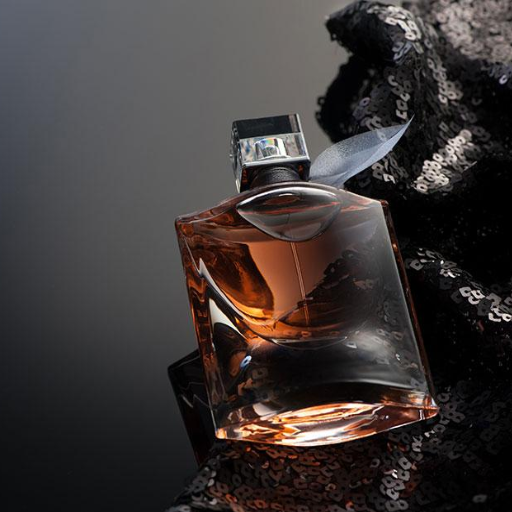
- Testing Too Many Scents at Once
Smelling several perfumes quickly may overload a person’s senses, hiding the scents’ true aromas. Do not exceed 3-4 scents per visit.
- Skipping a Patch Test
Fragrance reacts differently with different skin chemistry. Always test fragrances on the skin to fully appreciate how a scent alters over time.
- Relying Only on the Bottle or Brand Name
Sometimes, a perfume’s packaging and branding are alluring; however, they don’t guarantee the scent will suit you. Always look at the fragrance before its external presentation.
- Judging the Scent Too Quickly
Allow the fragrance to settle on your skin before making a final decision. The fragrance has layers (top, middle, and base notes) that develop over time.
- Buying Without Considering Lifestyle or Occasion
Pick a scent that complements your activities, style, and setting. Lighter, fresh fragrances are suited for daytime, while rich, intense ones are reserved for formal events.
Why buying a perfume based solely on how it smells on someone else is risky
It is unwise to purchase a perfume based only on how it smells on someone else, as fragrances interact differently with every person’s skin chemistry. Differences in body heat, shed skin, and body secretions can render what smells impressive to other people, but they do not suit me. A good rule is to always try a sample bud on one’s skin before choosing it.
Understanding how seasonal changes can alter the fragrance’s performance
Changes in season can impact how a scent works and is seen. High temperatures can make light notes like citrus or water scents even more refreshing in warmer months. The sun’s light amplifies scents. Conversely, during colder months, the performance in capturing scent molecules is less intense. The warmer barrels tend to work in winter; they are richer and cut through the coolness. Understanding these variations helps choose fragrances in tandem with the weather and personal preferences.
The importance of waiting before making a purchase decision
Taking your time before making any purchases is essential, guaranteeing satisfaction and value. Consumers appreciate more when they study and review the intricate details of the product, past customer experiences, and expert reviews. Research indicates that impulse spending leads to discontent in most cases, and nearly 53% of consumers regret unplanned purchases. A more informed decision is reached when individuals take the time to assess the quality and value of products over an extended period. Further, patience in exploring alternatives and waiting for sales or promotions adds to considerable savings. Patience helps consumers escape buyer’s remorse and ensures that what is purchased aligns with actual needs and the spending limit.
Where and how should I apply perfume for maximum impact?
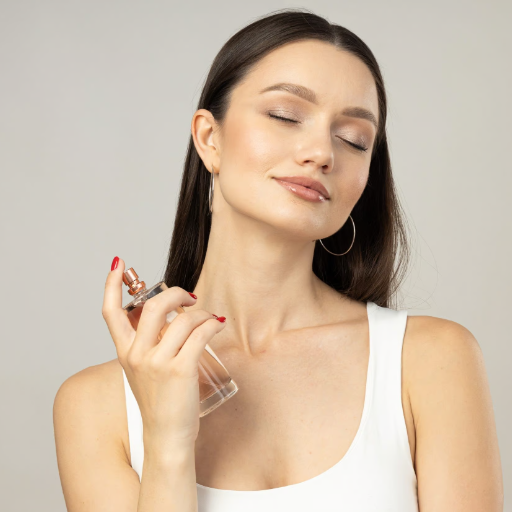
For the most effective application, perfume should be placed at the pulse points where the skin is warm, such as the wrists, behind the ears, neck, and inner elbows. These spots aid in distributing the fragrance as they give off heat. The skin must be clean and moisturized before application to lengthen the duration of the scent. Do not rub the perfume onto the skin as it destroys the scent, instead spray or dab on lightly and let the fragrance settle.
Best pulse points for applying perfume to make your scent last longer
To maximize the time the smell lingers on the skin, it is best to focus on the specific areas of the body called pulse points. These regions radiate warmth, which activates the fragrance and helps disperse it throughout the day. Some of the most effective pulse points include:
- Wrists: The veins under the skin warm this area and are ideal for releasing fragrance.
- Behind the Ears: This spot is private and ensures the fragrance is discernable during close interactions.
- The base of the Throat is a great spot for even distribution of fragrance, especially while wearing a collared shirt or open neckline.
- Inner Elbows: This inconspicuous yet warm region increases the fragrance’s longevity, especially with natural arm movements.
- Behind the Knees: Applying fragrance here works best, especially in warmer temperatures, as this area emits heat when exposed.
- Ankles and Calves: Convenient for hot days or wearing skirts or dresses.
To ensure optimal results, apply perfume after moisturizing, as hydrated skin retains scent. Opt for fewer pulse points instead of too much application; this gives a better-balanced profile. These best areas provide a captivating scent throughout the day.
Why spraying perfume on clothing might damage fabrics
Perfume could damage specific clothing due to its chemical constituents, particularly when sprayed directly onto clothing. Alcohol is a common perfume ingredient and may hurt more delicate fabrics like silk, satin, and wool. In the long run, those fragile fabrics may suffer discoloration or weakening of the threads. Moreover, perfume stans and residues of oils may be left behind, which are challenging to clean, especially from light-colored fabrics. Research indicates that fabric adsorbed with alcohol-based fragrance may encut dye change, hence incurring fading or blotching over time. To maintain the structure of your clothing, skin is the better option for perfume application, or use safety mists made for scenting fabrics.
The correct spritz technique for optimal fragrance projection
For the best fragrance experience, apply perfume to pulse points like wrists, neck, and the area behind the ears where the skin is warmer. These areas help to diffuse the scent, providing balance throughout the day. Experts recommend placing the perfume bottle around 6-8 inches away from the skin and spritzing lightly to not oversaturate a single area too much. Allow the perfume to dry on the skin without rubbing, breaking down its composition, or altering its notes. To extend the lasting effect, apply fragrance-free moisturizer beforehand because scentless lotion helps the perfume stick to the skin better. The skin also needs to be hydrated so fragrance can adhere well. Following these improves the projection and protects the perfume’s profile for the best olfactory experience.
How can I find my perfect signature scent?
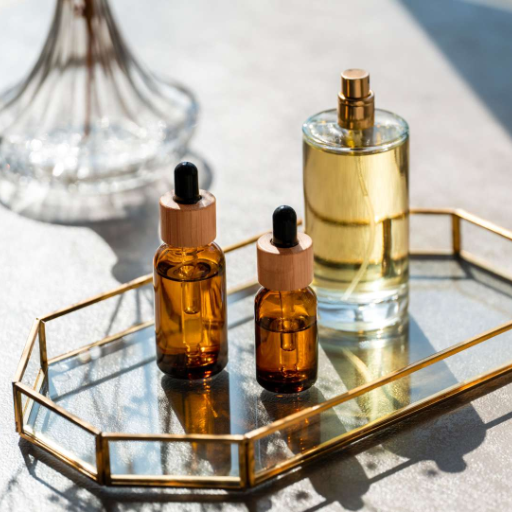
Discovering your signature scent requires delving into fragrances that capture your character, lifestyle, and personal preferences. Notice the scent families that appeal to you, such as floral, woody, fresh, and oriental. It’s best to go to a store where you can test the perfume on your skin since body chemistry significantly impacts the scent. Only testing a couple of perfumes enables your senses not to be overwhelmed. Your instincts should be relied upon, and select a fragrance that allows you to feel comfortable and confident.
Tips for discovering fragrances that match your personality and lifestyle
- Identify Your Favorite Scent Families
It is already known that humans are attracted to scents that match their personalities and habits. Hence, scents are classified into citrus, floral, fresh, and gourmand. For instance, floral scents such as soft powders are great for relaxing individuals.
- Consider Your Daily Activities and Environment
Wearing fragrance should be based on your routine and environment. A fresh or aquatic fragrance would work best for a gym session or a highly active day. On the other hand, spicy or oriental scents work well for evening occasions. Research indicates that lighter fragrances outperform richer ones in warm climates, and richer, more intense scents pair more effectively with cooler environments.
- Experiment with Layering
For those looking to enhance their fragrances, fragrance layering can achieve a more personalized scent. This means using two or more fragrances with complementary notes to create a new fusion. Research shows that fragrance layering enhances scent longevity on the skin, thus enabling you to use different fragrances without investing in multiple perfumes.
- Align with Seasonal Changes
Scent choices can be adjusted based on the time of year. Fresh florals and green notes are ideal for spring and summer, while deeper earthy and woody scents complement autumn and winter. Aligning scents with seasons can enhance the experience and make a fragrance feel more natural.
- Take Advantage of Sampling Programs
Numerous perfume shops and houses offer samples or discovery sets. These allow customers to try several scents before purchasing a whole bottle. Research suggests that customers using sampling programs are 50% happier with their final fragrance selection.
- Use Fragrance Personality Quizzes
These online tools use answers regarding a person’s lifestyle, interests, and character to generate tailored fragrance recommendations. Such quizzes help identify appropriate scents and frequently propose matches the user did not consider.
- Evaluate the Fragrance Throughout the Day
Perfumes mature by changing from an overture phrase to a heart and a base note. Research shows that approximately 60% of people quickly decide about fragrances. However, waiting several hours can provide a better overall impression of a scent’s profile and how it engages with a wearer’s skin.
Trying out different techniques, like the ones listed above, can help find fragrances that resonate with people and make these choices enjoyable and meaningful.
Why sampling before buying a whole bottle of perfume saves money
Before buying the full-sized bottle of perfume, sampling it is the best option as it allows the user to evaluate the value it brings. Given that quality fragrances range from $50 to several hundred dollars, purchasing a new perfume without testing is a gamble. Sampling ensures you do not blindly invest. Many vendors and companies offer sampling sets that cost much less than a complete set to let the customers evaluate how it pairs with their natural scent and preferences. Sampling also mitigates unintentionally buying perfumes that do not work for you and saves hundreds. By simply avoiding buying without testing, customers reduce the chances of experiencing impaired purchase syndrome and instead build an optimized collection.
How to build a fragrance wardrobe for different occasions
Creating your fragrance wardrobe means collecting fragrances that best suit different aspects of your life. Start by picking fresh daytime and office wear scents with citrus and aquatic notes. These scents project confidence while not overpowering people. For evening and formal events, richer and more complex fragrances with notes such as amber, oud, or spices are perfect, as they have a sophisticated scent.
Keep your seasons in mind when choosing your fragrances. Spring and summer are ideal for bright floral or fruity scents, as warmer weather is more pleasant with such scents. Earthy and woody fragrances shine in fall and winter, adding a cozy and comforting aura. Research suggests that many people have an appealing fragrance with soothing notes of vanilla or sandalwood during cold seasons.
Last but certainly not least, remember personal preferences and lifestyle factors when you build a wardrobe. For Example, fresh and energizing scents with herbal or green notes work best if you lead an active lifestyle. Floral bouquets or luxurious oriental floral perfumes are excellent options for occasions like weddings. Strive to have 4-6 fragrances that balance these categories, effortlessly covering every event and season. Thoughtfully curating your fragrance wardrobe fosters adaptability, promotes consideration, and allows you to express personal style in any situation.
Reference Sources
1. “Understanding Consumer Preferences for Perfume Fragrances” (Published 2021)
Source: Semantic Scholar
Summary: This study investigates common consumer purchasing mistakes in the fragrance market, emphasizing the importance of trying a perfume in different environments before buying. The researchers surveyed over 500 participants to analyze how external factors, such as store lighting and marketing strategies, impact purchasing decisions. Findings suggest that impulse buying often leads to dissatisfaction, as scents smell different outside the store environment.
2. “Allergic Reactions to Fragrances in Commercially Available Perfumes” (Published 2020)
Source: Journal of Dermatological Science
Summary: This paper highlights the potential for allergic reactions caused by specific synthetic and natural fragrance components. Researchers identified the most common perfume allergens and recommended avoiding products with ambiguous labeling. The study was conducted using patch tests on individuals across different demographics, with clear evidence linking sensitive skin reactions to specific ingredients commonly used in perfumes.
3. “Fragrance Longevity and Environmental Factors” (Published 2019)
Source: International Journal of Cosmetic Science
Summary: This research focuses on consumer misconceptions about perfume longevity and how environmental exposure affects scent profiles. The study utilized controlled experiments to demonstrate how humidity and skin chemistry alter a fragrance’s staying power. It advises against purchasing perfumes that do not align with one’s daily lifestyle or climate conditions.
4. “Marketing and Branding Challenges in the Perfume Industry” (Published 2018)
Source: Marketing Quarterly Review
Summary: This article discusses how brand marketing can often mislead consumers into prioritizing packaging and brand prestige over personal scent preferences. Consumer interviews conducted in the study reveal that buyers usually regret purchases influenced by trends or celebrity endorsements. The paper suggests focusing on personal compatibility over brand promotion when selecting a perfume.
These references provide valuable insight into common pitfalls to avoid when purchasing a perfume, empowering consumers to make more informed decisions.
Frequently Asked Questions (FAQs)
Q: What should I remember when buying perfume for the first time?
A: When buying a fragrance for the first time, consider the following: identify which scent families you prefer (floral, woody, oriental, fresh), understand the difference between eau de parfum (stronger, longer-lasting) and eau de toilette (lighter), test the perfume on your skin rather than just smelling the bottle, give the fragrance time to develop (at least 30 minutes), and consider the occasions when you’ll be wearing perfume. Remember that a quality perfume will evolve on your skin, revealing different fragrance notes as hours pass.
Q: How do I test a new perfume before making a purchase?
A: To properly test a new perfume, spray it on your skin (preferably wrists or inner elbows) rather than paper strips for an accurate impression. Avoid rubbing your wrists together, as this crushes the fragrance molecules. Give the scent time to develop—at least 30 minutes but ideally several hours to see how it evolves through its top, middle, and base notes. Consider bringing coffee beans to reset your sense of smell when testing different perfumes. Remember that perfume smells different on different people due to individual skin chemistry.
Q: What are the essential things to know before buying a perfume as a gift?
A: When buying perfumes for someone else, determine their fragrance preferences first. Notice their current favorite perfumes to understand what scent families they enjoy. Consider the recipient’s lifestyle, personality, and occasions they might wear the fragrance. If possible, get a sample before committing to a full bottle. Gift sets with lotion or shower gel can be a great way to try a new scent. Remember that fragrances are personal, so include a gift receipt if the perfume doesn’t match their taste.
Q: How do I find a fragrance that suits my personality?
A: To find a fragrance that suits you, first understand different scent families (floral, oriental, woody, fresh) and consider which aligns with your personality and preferences. Research the fragrance notes that appeal to you. When you test, try it on your skin to see how it interacts with your chemistry. Give perfumes time to develop—the initial spray often changes significantly after 30 minutes. Consider your lifestyle, the occasions you’ll wear it, and the season. Don’t rush the decision when buying a quality perfume; the perfect fragrance should feel like an extension of yourself.
Q: What is the best way for proper storage of perfumes?
A: To properly store your perfumes, keep them in a cool, dry place away from direct sunlight and heat, as UV rays and temperature fluctuations can break down the fragrance compounds. The bathroom is one of the worst places due to humidity and temperature changes—store bottles in their original boxes for extra protection. Keep perfumes away from windows and radiators. Consider keeping extraordinary perfumes in a dedicated cabinet or drawer for long-term storage. Proper storage will significantly extend the quality of your perfume, with most fragrances maintaining their integrity for 3-5 years when stored correctly.
Q: How much should I expect to spend to make the best purchase?
A: When buying perfume, prices vary dramatically from $30 to several hundred dollars. Designer fragrances typically range from $70-150 for 1.7-3.4 oz, while niche and luxury perfumes can exceed $200. To make the best purchase without overspending, try sample sizes first (often available for $3-10), look for travel sizes (usually 0.5-1 oz) to test a longer-term fragrance, or purchase discovery sets from brands to try multiple scents. Sales during holidays can offer 20-40% discounts. Remember that price doesn’t always indicate quality—some affordable fragrances are exceptional, while some expensive ones might not suit your preferences.
Q: How do I navigate the perfume world as a beginner?
A: As a beginner in the perfume world, start by learning basic scent families (floral, oriental, woody, fresh) and understanding concentration levels (parfum, eau de parfum, eau de toilette). Visit department stores to sample different fragrances, but limit yourself to 3-4 per visit to avoid sensory overload. Use coffee beans between samples to reset your sense of smell. Ask for samples at home, as proper testing requires wearing a scent for several hours. Consider starting with designer fragrances before exploring niche brands. Online resources like Fragrantica and Basenotes can help you understand notes and classifications. Developing your “nose” takes time, so be patient as you discover your preferences.
Q: Why does the same perfume smell different on different people?
A: Perfumes smell different on different people because of individual skin chemistry. Factors like pH, natural oils, hormones, diet, medications, and stress levels can alter how fragrance notes develop and project. Body temperature also plays a significant role—warmer skin amplifies and projects scents more intensely. Additionally, your sense of smell (affected by genetics and experience) influences how you perceive fragrances. This is why trying perfume on your skin is essential rather than smelling from the bottle or a paper strip. A scent that smells amazing on someone else might not have the same effect on you due to these biological differences.

